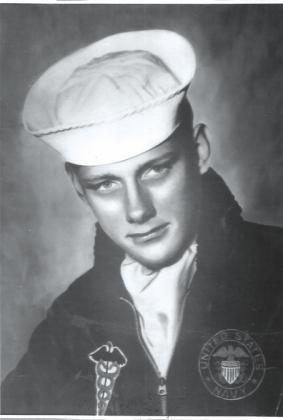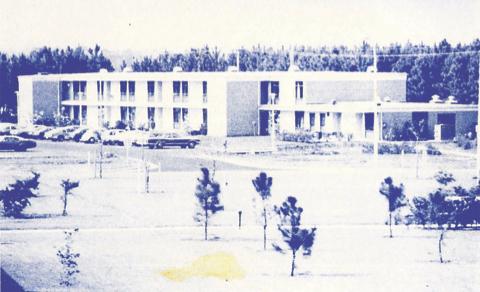Dewey Ray Burns Jr. was killed in action in Quang Ngai Province in South Vietnam on Sept. 13, 1969.
A graduate of Miller Grove High School, Burns enlisted in the U.S. Navy in July 1967 and was shipped to California in August. A few months later, he married his high school sweetheart, Carolyn (Garmon) Burns on May 25, 1968.
“I knew the minute I met him … I knew right then that he was going to be the man I would marry some day,” Carolyn said of her late husband. “He was killed one month short of his 21st birthday.”
Burns was on leave for 21 days and spent it with Carolyn and their new baby girl. He was then sent to Pendleton base en route to serve in Vietnam.
“I think he told me that the life expectancy of a corpsman was just a couple of weeks,” Carolyn recalled. “You’re over there taking care of the wounded, and you really have no protection. You’re helping the [wounded] people.”
According to documents, Burns was serving with the Combined Action Platoon 1-3-9, III Marine Amphibious Force in 1969. Trained as a medic, he rendered aid to soldier who had fallen under fire and carried him to safety. Burns was mortally wounded. He had been in Vietnam for one month.
In October 1969, Carolyn received a letter stating that Burns was to be awarded a Purple Heart medal and Combat Action Ribbon posthumously. Additionally, he was awarded the National Defense Service Medal, Vietnam Service Medal with one bronze star and Republic of Vietnam Campaign Medal, the letter from Vice Admiral Charles K. Duncan read.
In 1970, Carolyn received a letter from Capt. J.E. Savage (Burns’ commanding officer) explaining that Burns was to be awarded the Navy Cross. The medal is the U.S. military’s second-highest honor awarded for valor in combat; the highest is the Medal of Honor.
The ceremony for presenting the Navy Cross took place at what is now the Naval Air Station Joint Reserve Base in Fort Worth.
“[W]e have never presented the Navy’s most coveted medal, the Navy Cross, at the Naval Air Station before,” the letter read.
Less than a decade after his death, in 1976, Carolyn received word that a ceremony for the dedication of a residential building on the Naval Aerospace and Regional Medical Center in Pensacola, Florida would be held on Aug. 20, 1976 and named in Burns’ honor.
A program from the event described Burns’ sacrifice: “On one occasion, Petty Officer Burns was directly responsible for saving the lives of his patients when he defeated an enemy soldier in hand-to-hand combat. Observing that the platoon’s interpreter was wounded and had fallen in the direct line of fire of enemy machine guns, Petty Officer Burns directed nearby marines to provide covering fire and raced to the side of the casualty. Although he, himself, was seriously wounded while treating the fallen interpreter, he resolutely continued his lifesaving actions until he had stopped his patient’s bleeding. He then commenced leading his charge toward a location of relative security, but was mortally wounded before he could attain his objective.”
Carolyn said that they somehow knew when Burns left at the end of his 21-day leave, he would not be returning.
“When we saw each other at the airport, he refused to talk to me about it. We both knew that he wasn’t coming back alive. We just had that feeling, but he wouldn’t talk to me about it. … I never dreamed it would be so fast,” she said.
Burns Hall was dedicated as a bachelor enlisted residential building with “11 modular units featuring four bedroom-bathroom combinations around a central lounge. Women are quartered on the first floor and men on the second floor of the complex, which can house 116 people,” an article in the October 1976 issue of Navy Medicine reported.
“To me, people have not done the Vietnam veterans right. They were just looked down upon, really,” Carolyn said. “He loved his country, and he knew what he was getting into when he went over there.”



